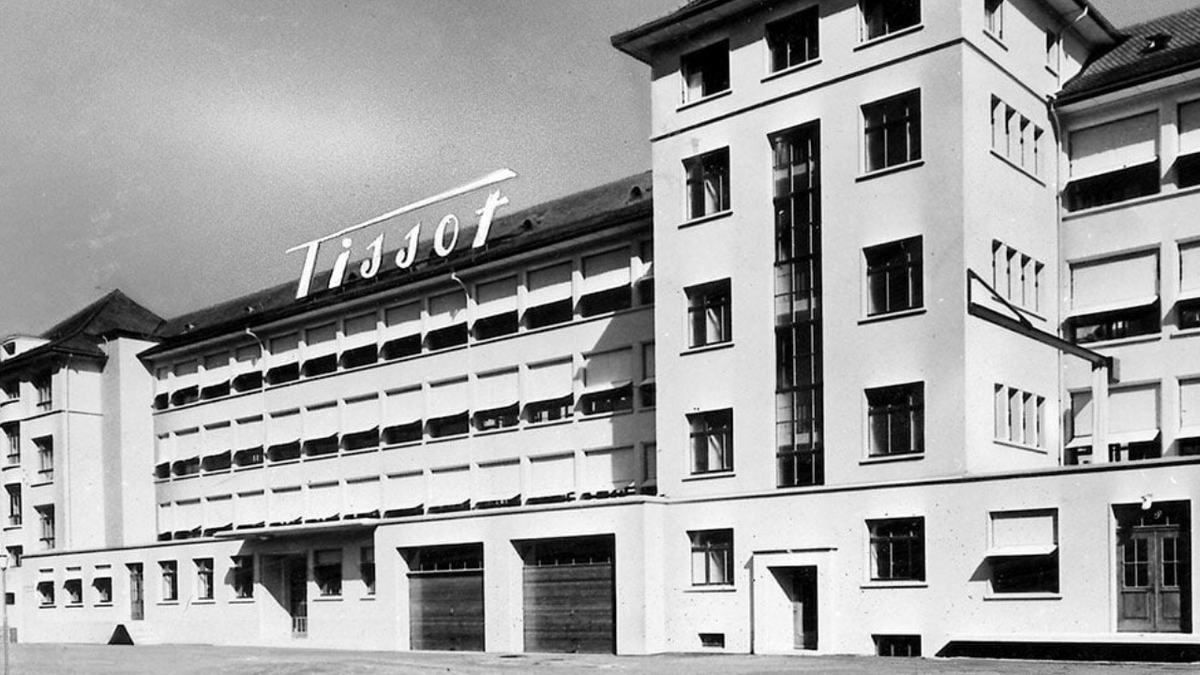
Tissot Watch History: From Pocket Watches to the PRX Revolution
|
|
Time to read 4 min


|
|
Time to read 4 min
For years, I've had the pleasure of delving into the intricate world of timepieces, and one brand consistently stands out for its blend of rich heritage, groundbreaking innovation, and exceptional value: Tissot. While some brands might grab more headlines, Tissot has quietly, yet powerfully, shaped the landscape of Swiss Watch Making for over 170 years. Join me as we journey through the fascinating history of this enduring icon, exploring its origins, revolutionary innovations, and its vibrant presence in the modern watch market.
Every grand story has a starting point, and for Tissot, it was the picturesque town of Le Locle, nestled in the Swiss Jura Mountains. In 1853, a father-son duo, Charles-Félicien Tissot and Charles-Émile Tissot, founded "Chs Tissot & Fils" from their family home. Le Locle itself was a buzzing hub for watch making, with half its population dedicated to the craft. In this fertile ground, Tissot quickly made a name for itself, initially by crafting precise and reliable pocket watches. What's truly remarkable is that in their very first year, they introduced the world’s first pocket watch with two time zones, a groundbreaking feat that foreshadowed a long line of innovative.
The entrepreneurial spirit of Charles-Émile and his son Charles soon propelled Tissot beyond Swiss borders. Charles-Émile embarked on treacherous journeys, and by 1858, he was selling Tissot pocket watches across the vast Russian Empire, even gaining the blessing of the Czar. Russia quickly became their biggest market, with their reliable pocket watches highly appreciated, even reaching the Tsar's court. This early global footprint was complemented by numerous awards at industrial exhibitions, solidifying Tissot’s reputation for quality and precision on the international stage.
As the world evolved, so did Tissot. Sensing the growing shift in watches, the brand was among the very first to embrace the emerging trend of wristwatches, initially designing models for women. The legendary actress Sarah Bernhardt proudly wore a Tissot, a testament to its early appeal. By 1918, Tissot had transformed from an assembler to a full "manufacture," producing its own ébauches (watch movement blanks) and movements in-house, a significant step towards self-sufficiency and quality control.
The 1920s brought a new challenge: the pervasive magnetism from electricity affecting watch precision. In response, Tissot unveiled a revolutionary solution in 1930: the Tissot Antimagnétique, the world’s first non-magnetic wristwatch. This was a game-changer, demonstrating Tissot's commitment to solving real-world problems for its customers. The same year, in a move that would prove crucial for its longevity, Tissot merged with Omega to
form the Société Suisse pour l’Industrie Horlogère (SSIH). This strategic partnership was instrumental in navigating the turbulent economic crisis of 1929 and boosting its distribution network. Post-World War II, Tissot experienced extreme growth, further cementing its position with innovations like the 1953 Navigator, the first mass-produced watch to display 24 time zones simultaneously, a true marvel for the burgeoning era of global travel.
The 1970s brought the "quartz crisis," a seismic shift that devastated many traditional Swiss Watch Making companies reliant on mechanical technology. Many were forced to close their doors. However, Tissot, bravely adapted. Instead of succumbing, they refocused on innovation, particularly by exploring new and unconventional materials.
The ultimate salvation for the Swiss watchmaking industry came from Nicolas Hayek's innovative strategies, leading to the formation of the Swatch Group in 1983, with Tissot as a foundational member. This new support allowed Tissot to not only survive but thrive.
As the world embraced digitalization, Tissot once again paved the way. In 1999, they introduced the T-Touch, the world's first tactile (touchscreen) watch. This revolutionary timepiece, with its six functions activated by touching different zones on the sapphire crystal, showcased Tissot’s relentless pursuit of cutting-edge technology. The T-Touch line has since expanded to include solar-powered versions, solidifying Tissot’s position at the forefront of modern watch technology.
Beyond technological prowess, Tissot has deeply ingrained itself in the world of sports. With a history in racing sponsorship dating back to 1958, Tissot is now the official timekeeper for major global sporting events, including MotoGP, NASCAR, the NBA, cycling world championships, and ice hockey championships. This strong connection is reflected in their robust and sporty collections, like the T-Race and PRS lines.
Tissot continues to balance innovation with its rich heritage. Their diverse portfolio includes everything from elegant dress watches like the Le Locle collection, named after their enduring hometown, to robust dive watches like the Seastar. Perhaps most notably, their recent success with the Tissot PRX has captivated both new and seasoned collectors. Inspired by a 1970s model, the PRX perfectly embodies Tissot's ability to blend vintage aesthetics with modern Swiss precision, offering exceptional quality and design at an accessible price point. This focus on quality, innovative design, and adherence to Swiss watchmaking tradition ensures Tissot remains the traditional Swiss watch brand that sells the most watches in the world today.
The Tissot's journey is a powerful narrative of adaptability, innovation, and unwavering commitment to quality. From its pioneering pocket watches in Le Locle to its groundbreaking anti-magnetic and tactile wristwatches, and its modern-day sporting collaborations, Tissot has consistently demonstrated a unique ability to read the signs of time and evolve. For both seasoned luxury watches collectors and those just beginning their horological adventure, exploring Tissot’s diverse collections offers incredible value, historical depth, and a timeless piece of Swiss Watch Making excellence. Whether you're drawn to the retro charm of the PRX or the classic elegance of their heritage pieces, there’s a Tissot waiting to tell your story.



